On View
Michael Williams Makes Solo Museum Debut in the US
We spoke to the artist about his unique painting style, the market's interest in his work, and his first solo museum show in the US.
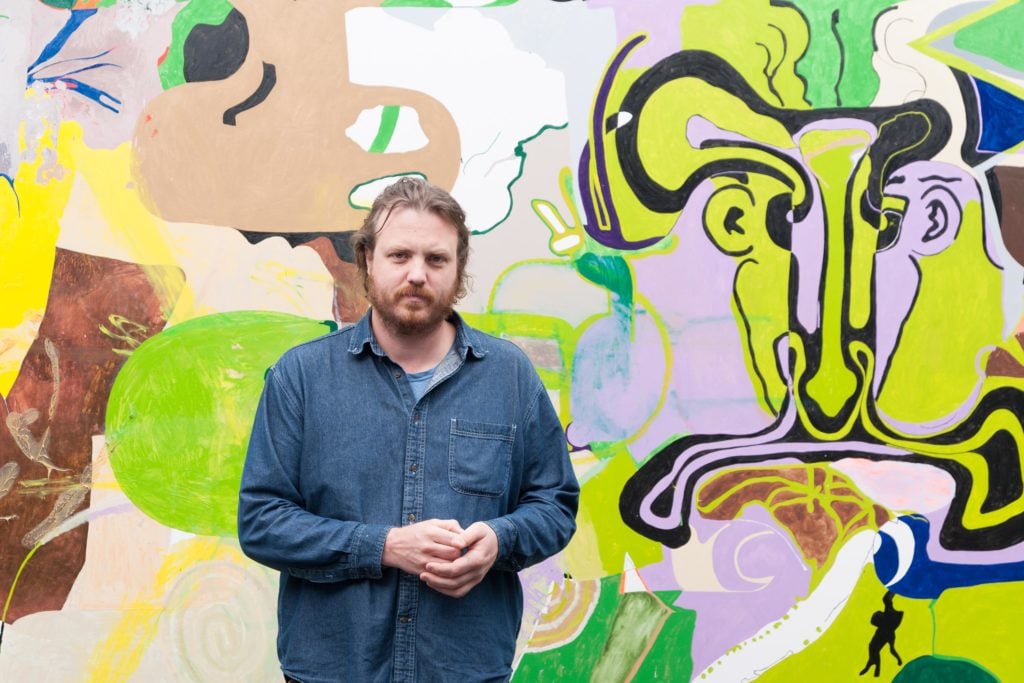
We spoke to the artist about his unique painting style, the market's interest in his work, and his first solo museum show in the US.

Henri Neuendorf

Michael Williams has been animating the art world with his colorful and quirky paintings for over a decade—ever since his solo debut at New York’s Canada gallery in 2007.
Aside from early experiments with oil painting, the artist has gradually phased out the use of the brush and since 2013 has developed a unique technical approach using a number of mediums including airbrush, digital inkjet printing, and oil paint to develop his energetic and eclectic works.
Throughout his constantly evolving body of work he has maintained a very distinct visual language characterized by a bold palette, layered imagery dotted with quirky, oddball references to pop culture and art history.
The attention has resulted in significant market interest, although Williams’s auction record has stood at $93,750 since 2015. The Observer reported that his works privately trade at around $200,000.
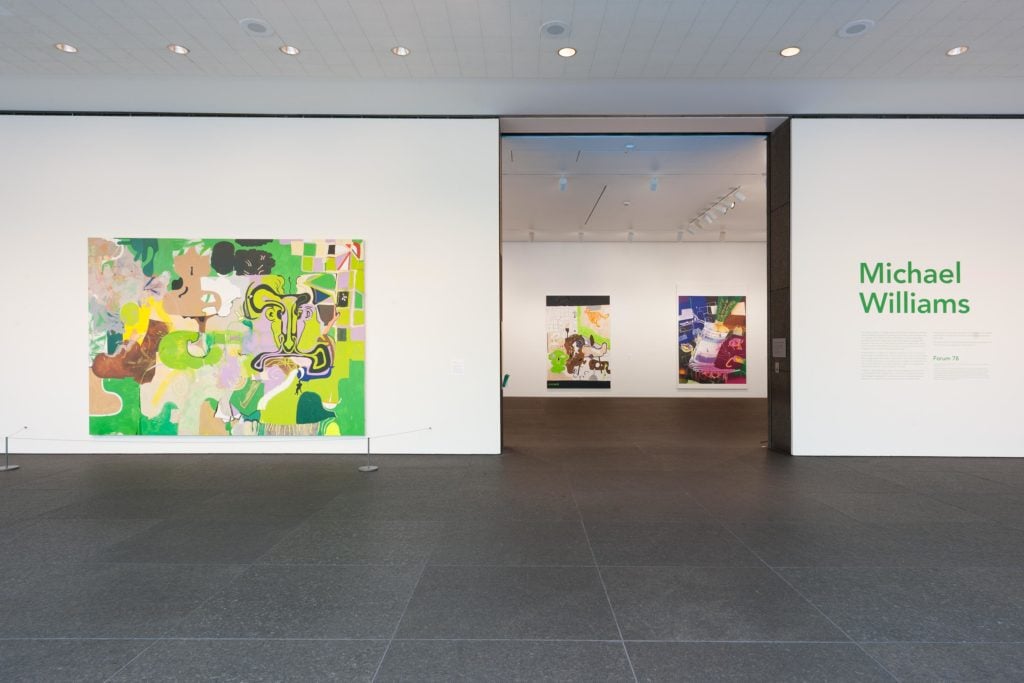
Installation view, Michael Williams at Carnegie Museum of Art. Photo: Bryan Conley.
The unique style and process earned Williams critical plaudits and international gallery shows in Denmark, Italy, Germany, and Switzerland, as well as a solo museum show at Canada’s Musée des Beaux-Arts de Montreal in 2015. That same year Gladstone Gallery announced the co-representation of the artist, together with New York’s Canada gallery. The artist is also represented internationally by Presenhuber in Zurich.
The artist’s ongoing show at the Carnegie Museum of Art in Pittsburgh (on view through August 20) is the artist’s first solo museum exhibition in America, and a homecoming of sorts for the native Pennsylvanian. Shortly after the show’s opening, artnet News spoke to the artist about his unusual approach to painting, his unique style, and his recently opened show at the Carnegie Museum.
Lets start from the beginning. How did you first come into contact with art, and when did you decide to become an artist?
I started painting when I was nine. It was the only thing I ever considered doing, except for a moment in college when I thought I could be a journalist. And there was another moment when I thought I could be a writer—I wanted to be an investigative journalist—but besides that I always thought I’d be an artist.
My mother was very encouraging. She isn’t a professional artist, but she’s good at art. She could paint and draw.
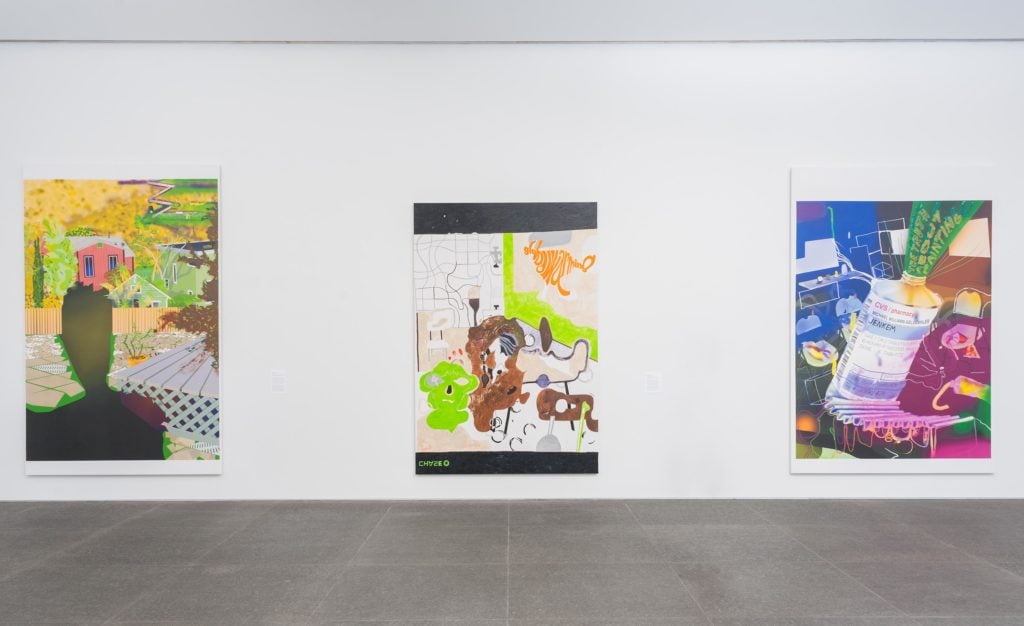
Installation view, Michael Williams at Carnegie Museum of Art. Photo: Bryan Conley.
Can a painting be a painting without the use of a brush?
I definitely do, and I also don’t think that’s anything new. There’s been paintings that didn’t use brushes that were made 100 years ago. People have made paintings with silkscreens 50 years ago. I know some people get up in arms about a painting being made with a printer. They ask “how can you call it a painting?” But for me it doesn’t even really occur to me. It’s a non-issue for me.
The creation of your new work uses more digital technology. Can you describe how your process has evolved?
I’m always trying to find a new way to make a painting, and whenever I can it’s pretty invigorating. I can usually get a few years worth of action out of it. For a while I was doing paintings with airbrush and oil paint. I was trying to find new ways for those mediums to interact with each other and printing is something I stumbled upon. I was printing out some collages to paint on top of, and making some drawings. Later, I realized I can just print out these drawings I was making on the computer. Printing wasn’t really my first thought but I’ve gotten a lot out of them.
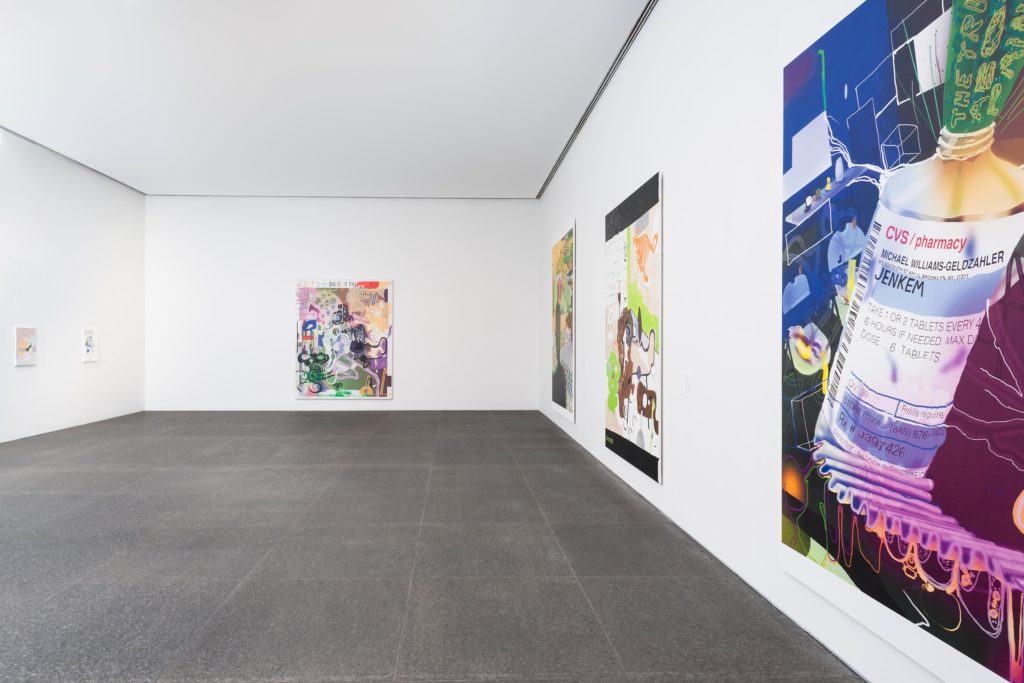
Installation view, Michael Williams at Carnegie Museum of Art. Photo: Bryan Conley.
How have you maintained your very distinctive visual language through the various phases of your work?
As I said earlier, about wanting to be an investigative journalist, that’s the way I want to approach painting. I’m trying to find things for me to learn about. It’s not that I’m trying to put out some message, I’m just trying to figure out the world for myself.
I do think a lot about the formal aspects of painting. But in terms of subjects over time, I often try to find the subjects that I think haven’t been in painting and in that way I can break the conversation somehow.
Who are the artists that you’ve looked at as influences?
There’s some artists. Peter Doig is one. I’ve been really interested in people like Sigmar Polke, Richard Artschwager, Malcolm Morley, Albert Oehlen, and other Germans. Joe Zucker. I’m a big fan of Joe Zucker.

Installation view, Michael Williams at Carnegie Museum of Art. Photo: Bryan Conley.
Your work contains a large number of different styles, both in terms of medium and content. Can you describe how you bring together this diversity in one artwork?
If I make a sandwich, I like to put a little bit of everything that’s in the refrigerator on it. I just like to see how different types of things interact with each other. I find painting to be a big long experiment and there’s more to discover when you’re combining materials.
To what extent do you think about the market in relation to your work?
It doesn’t really preoccupy me that much. It’s something that’s outside of the studio. I think about it when I’m having a show, of course, but when I’m in the studio I’m just trying to make the things that I want to see.
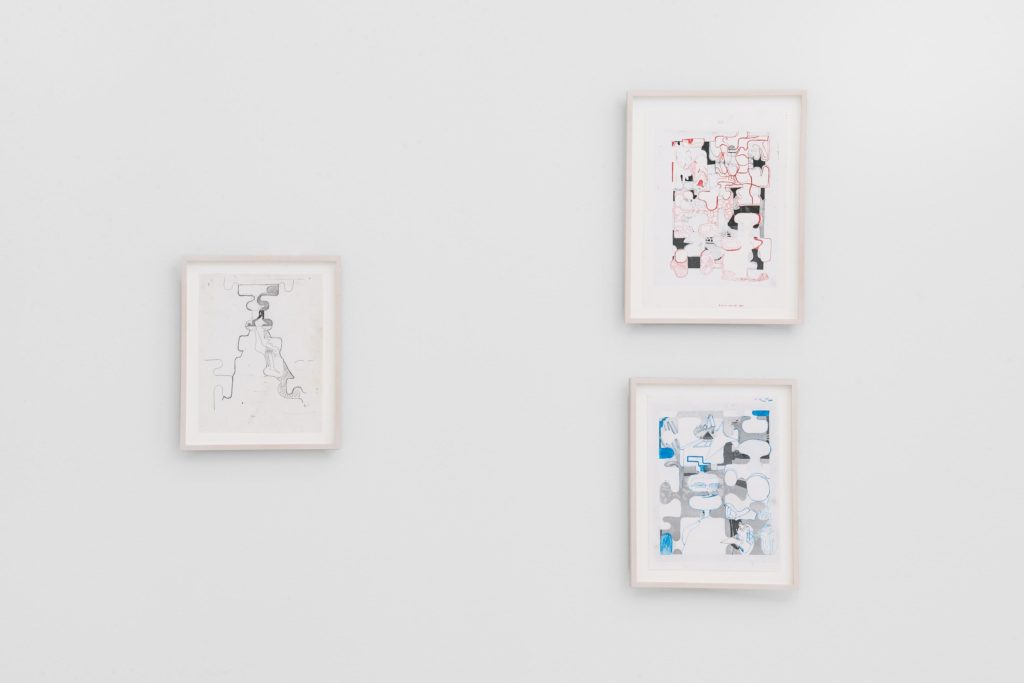
Installation view, Michael Williams at Carnegie Museum of Art. Photo: Bryan Conley.
What should we expect to see for your show at the Carnegie Museum?
There’s two rooms. A room of paintings and a room of 40 drawings. The paintings are inkjet paintings, oil paintings, and puzzle paintings, which are a type of painting I made seven years ago and started making some more recently. And then there’s some paintings that are in between those two.
The drawings are all puzzle drawings that I make in preparation for the puzzle paintings. They’re part of this convoluted process where I take one drawing and cut parts out of it and redraw them—trying to find new forms. It’s a way of encoding a representational image.
“Michael Williams” is on view at the Carnegie Museum of Art, Pittsburgh, through August 22, 2017.